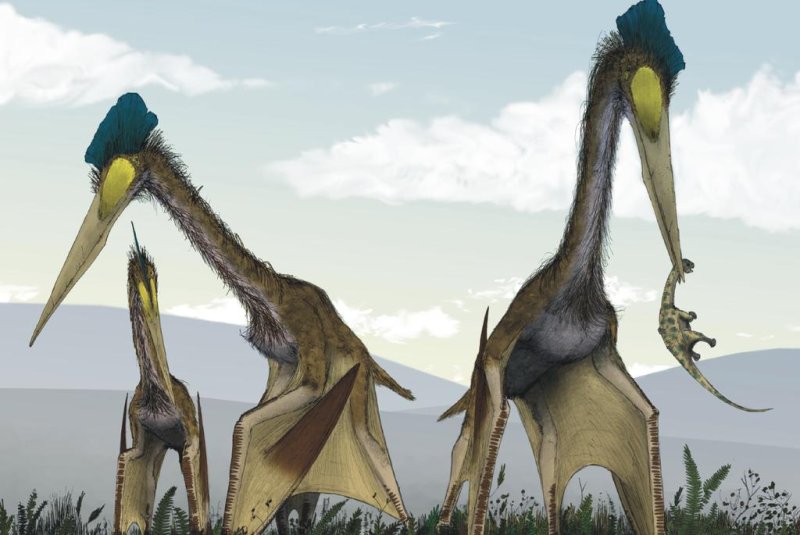An artist's rendering of giant foraging Azhdarchid pterosaurs. (CC/Mark Witton and Darren Naish)
MOSCOW, Aug. 18 (UPI) -- At some point during the late Cretaceous period, an epoch stretching from 100 to 66 million years ago, pterosaurs gave up their teeth. New research suggests these toothless winged dinosaurs came to dominate the ancient skies -- specifically Azhdarchidan pterosaurs.
Azhdarchidan pterosaurs boasted some of the largest flying animals ever to glide through the skies, with some specimens featuring wingspans stretching 30 to 40 feet. Azhdarchidan pterosaurs derive their name from "Aždarha," which is the Persian word for dragon. The so-called dragons apparently enjoyed marine environments, and also congregated near major lakes and rivers.
A new study by paleontologists at the Zoological Institute of the Russian Academy of Sciences, and published in the journal ZooKeys, analyzed the diversity and distribution of Azhdarchidae remains. The research effort reveals the Azhdarchidae family to be truly dominant.
"This shift in dominance from toothed to toothless pterodactyloids apparently reflects some fundamental changes in Cretaceous ecosystems, which we still poorly understand," Alexander Averianov, a researcher at the Russian Academy of Sciences, said in a statement.
For whatever reason, the lack of teeth worked. By the end of the Late Cretaceus, Azhdarchidan pterosaurs enjoyed a worldwide distribution and outlived their toothed predecessors.
But even though Azhdarchidan "dragons" are so spread out, their remains are few and far between, making comprehensive study difficult.
"Azhdarchidae currently represent a real nightmare for paleontologists: most taxa are known from few fragmentary bones, which often do not overlap between named taxa, the few articulated skeletons are poorly preserved, and some of the best available material has remained un-described for forty years." explained Averianov.
But by looking at fossil records from all over the world, Averianov and his colleagues were able to offer a picture of the family of flying dinosaurs bigger, broader than ever before.















